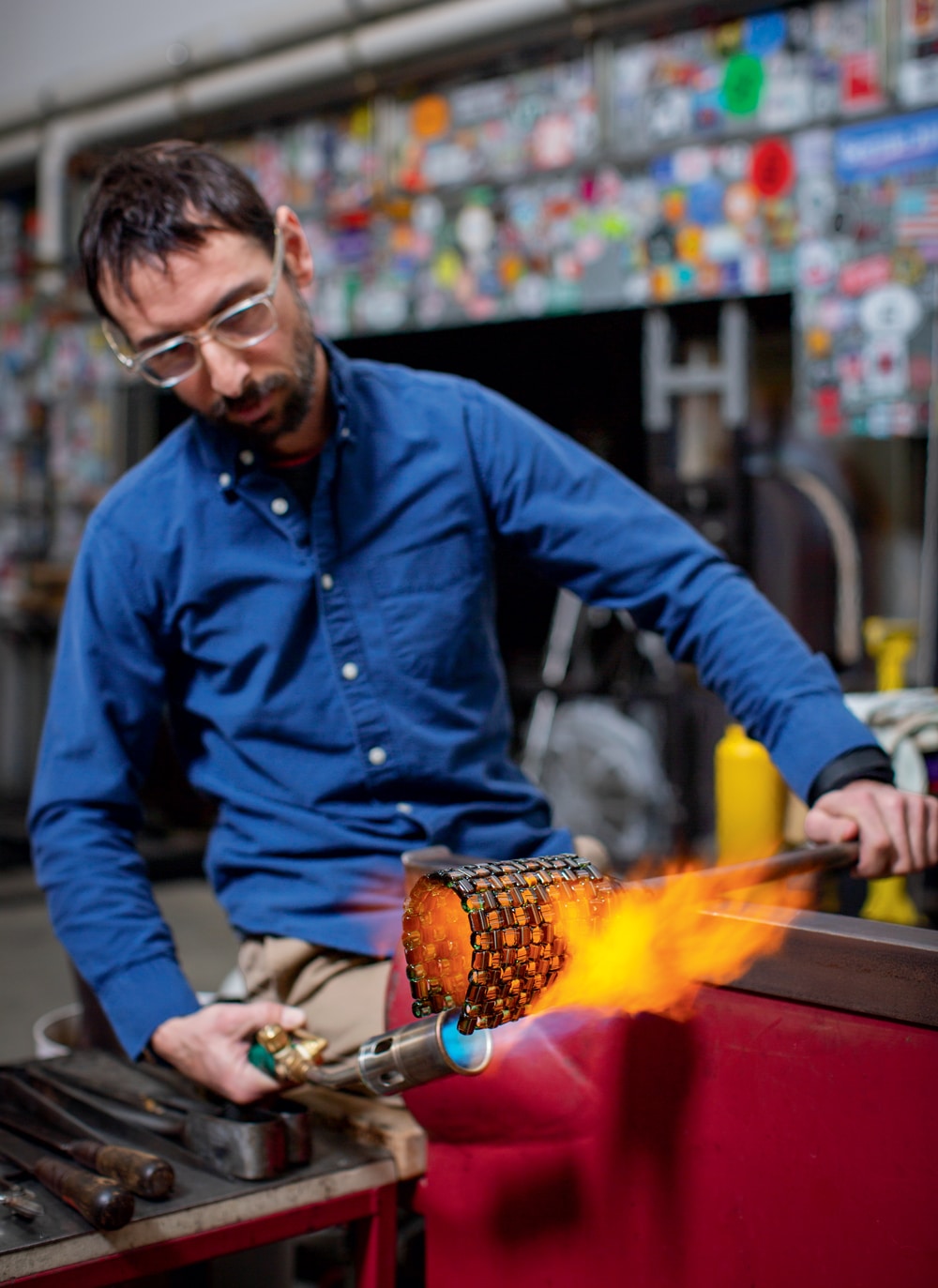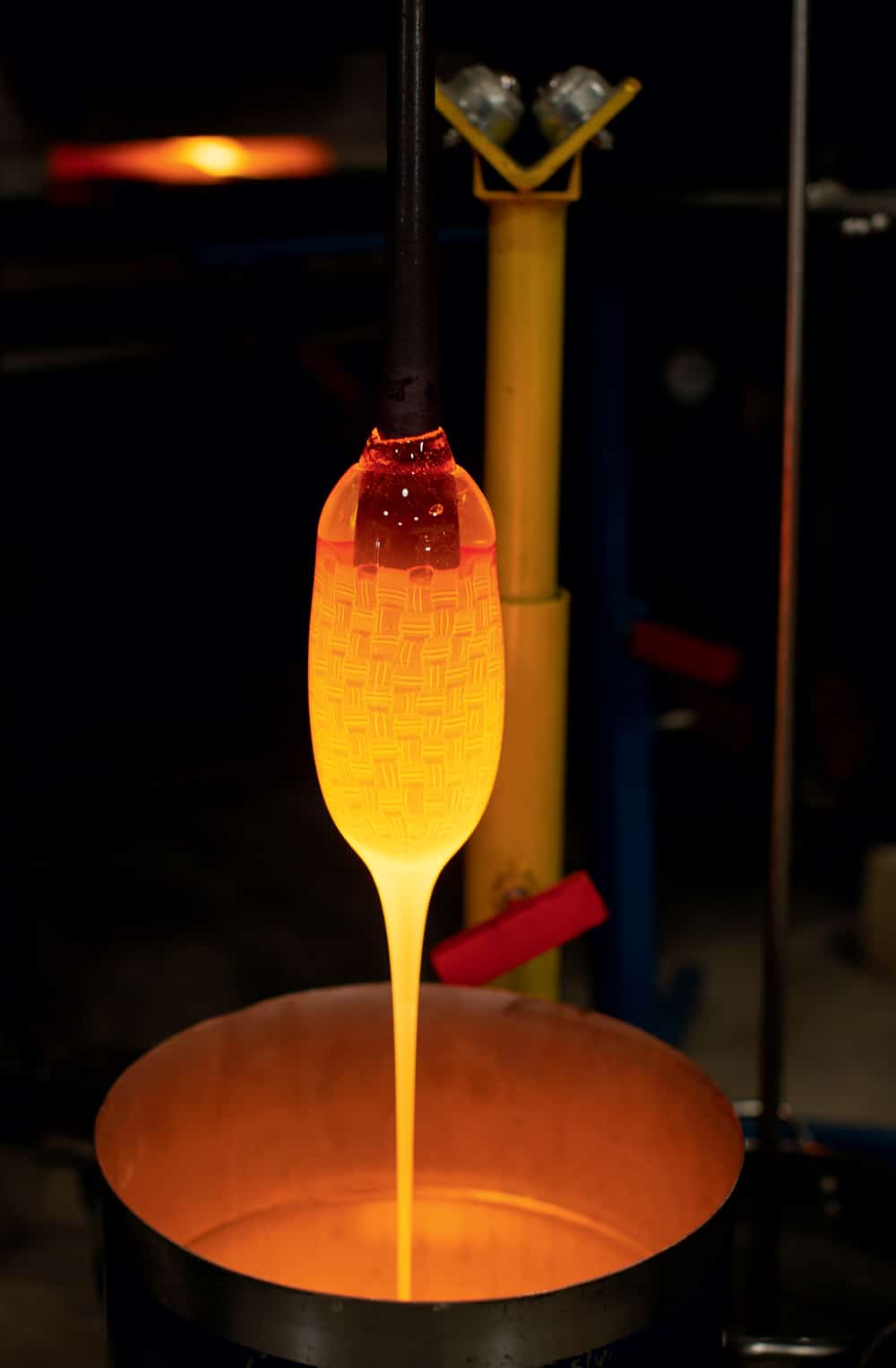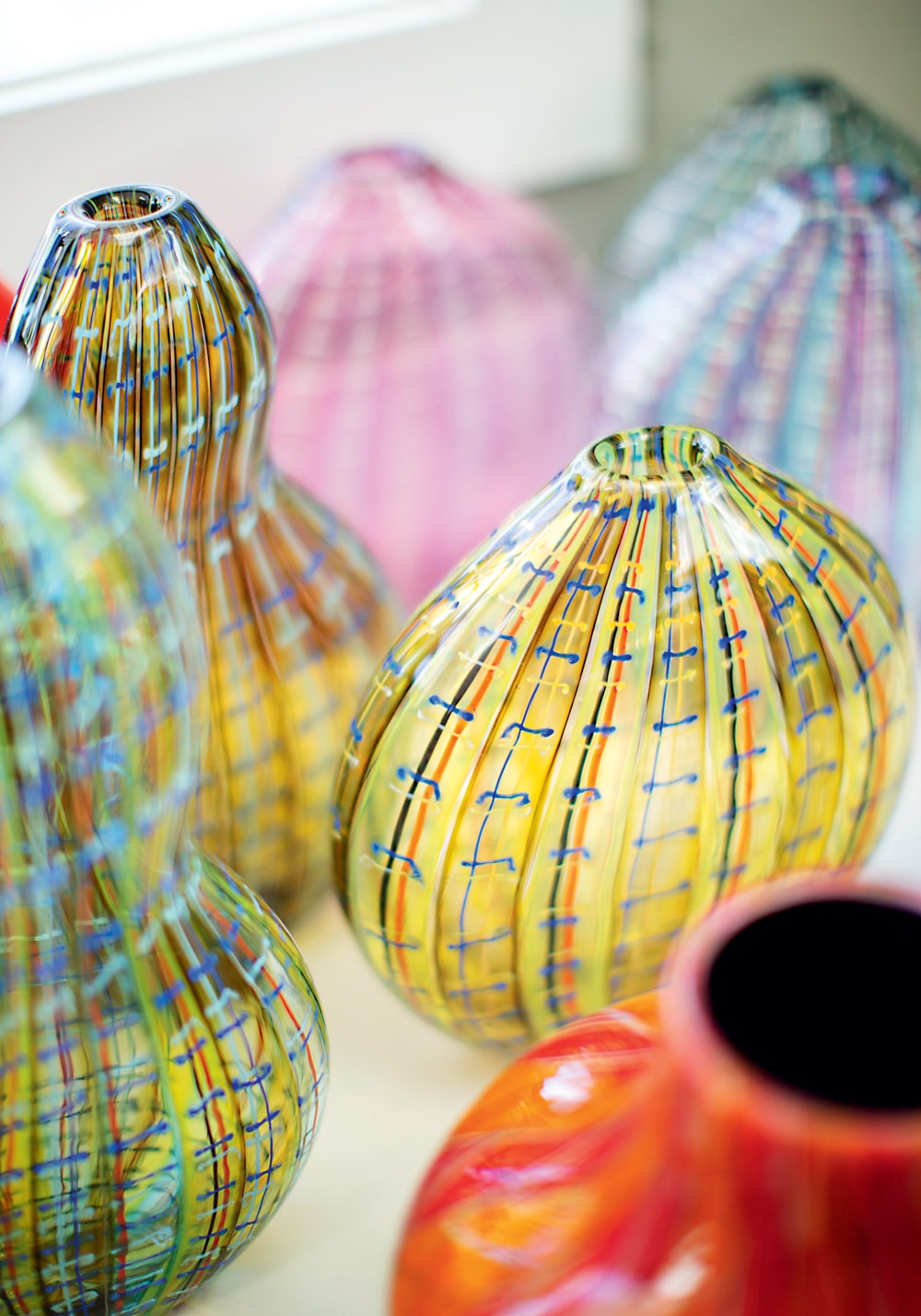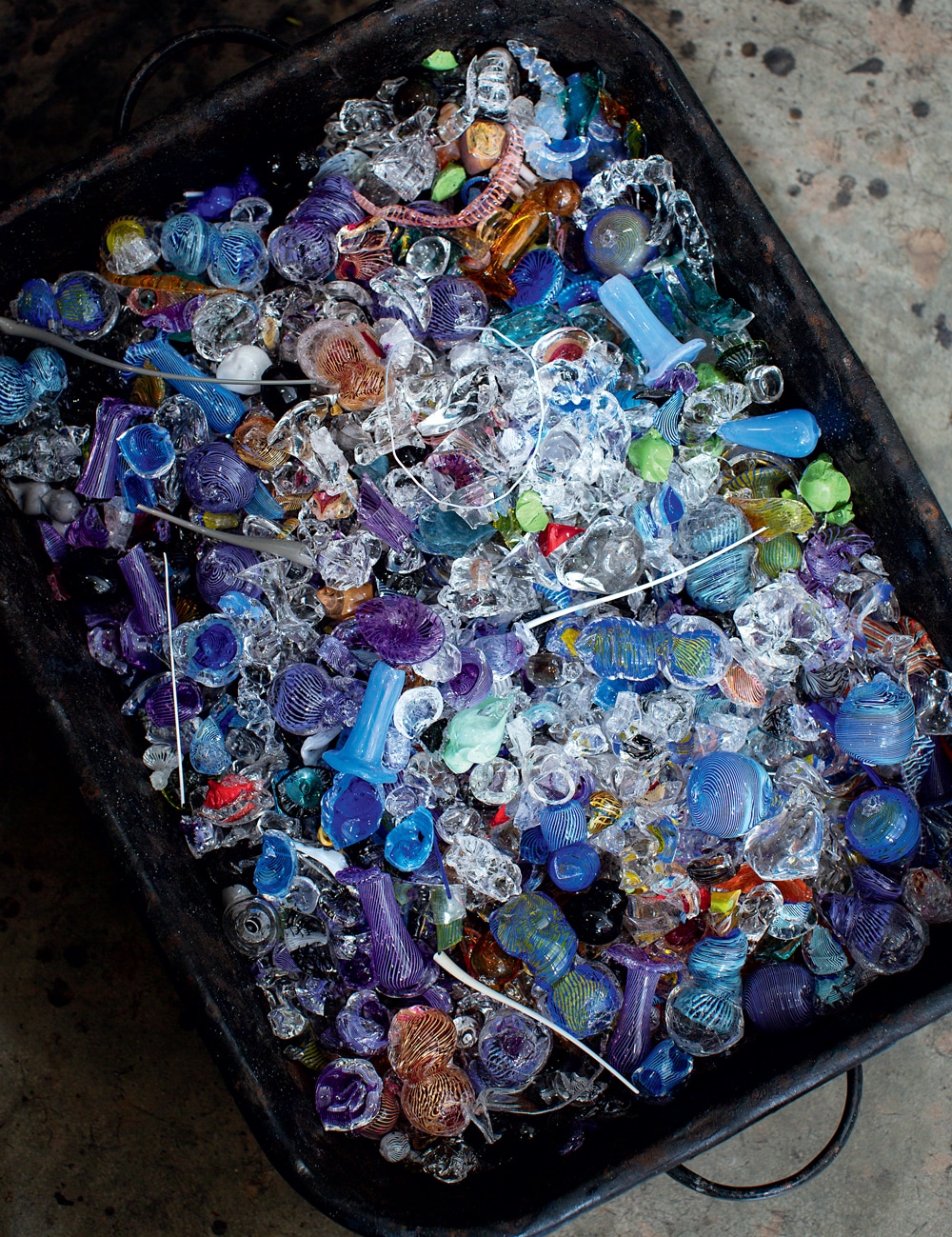Fire and Light | Glassblower Josh Bernbaum
Glassblower Josh Bernbaum pushes the boundaries, heating old ways into new.

Coffee By Design | Portland, Maine
Photo Credit : Katherine KeenanThe way up is rugged. Dirt roads fork through the Vermont landscape, fields spreading wide on either side, with a distant, distracting view of Mount Monadnock. But the road ahead is a sea of mud. Two miles of churning dirt, in the far reaches of Brattleboro. Best keep your eyes on it.
Here, near the top of a steep hill, in a red saltbox studio, glassblower Josh Bernbaum tends to his fires, furnaces glowing like burning suns, cranked to 2,300°F during a melt cycle. His economy of movement flows like steady breath into creating art glass that fuses the legacy and skill of Venetian glassblowers with his own imaginings. “Glass is an unforgiving material that people have worked with for thousands of years,” he says. “So I’m employing a lot of the same tools and techniques as my contemporaries, but also the glass workers that came before me.”

Photo Credit : Lori Pedrick
His spare efficiency is born from decades of experience: 24 years since graduating from the Massachusetts College of Art, where he first learned the ways of “cane,” slender rods of colored glass that can be fused and blown to create myriad patterns and effects. It wowed him with its unlimited possibilities. “Even though these are hundreds-of-years-old processes of working with cane techniques, there are so many looks that have yet to be discovered. I’m still finding new things to do with it, still making pieces no one has ever seen before.”
In the course of a morning, Bernbaum will line up individual pieces of cane, each as big around as a piece of chalk, and then alternate between heating them in the furnace and compressing them, nudging them closer with a pair of old files he found at a used tool barn in Maine, squeezing out any gaps, before sliding them back into the oven like a pizza. Back and forth, back and forth. His wife, Marta, a skilled glassworker in her own right, says that this stage is like “sculpting with overgrown chopsticks.”

Photo Credit : Lori Pedrick
It is the prelude to the drumroll, that moment that the casual observer waits for impatiently. Where breath meets molten material. Where a bubble grows at the end of a long blowpipe. Where art begins to emerge. A different, beautiful kind of inflation.
An impressive amount of ductwork vents Bernbaum’s furnaces, with almost every inch covered by an equally impressive number of stickers: Eat More Kale, This Car Climbed Mt. Washington, Makers Gonna Make. Two of the furnaces contain crucibles, bowls that hold molten material, one for clear and one for colored glass. On the other side of the room sit two annealers, boxy devices that gradually bring hot glass to room temperature.

Photo Credit : Lori Pedrick
Here in the middle, flanked by ovens and annealers, Bernbaum shapes, molds, and blows his glass, from delicate goblets, to tall speckled vase forms, to cactuses and botanicals. At the moment, his assistant is blowing into the blowpipe while Bernbaum cradles and shapes the emerging piece with, of all things, newspaper. Twelve sheets of The Boston Globe, trimmed to fit comfortably in his hand, and the smell of burnt paper fills the air as he wets the paper, forms the hot glass. Bits of char fall to the ground, a flutter of ash. “I used to use The New York Times, but they changed the paper,” he says regretfully. “It used to be perfect.”

Photo Credit : Lori Pedrick
Time is the thing that breaks boulders into tiny grains of sand. But fire, skill, and imagination can re-form silica sand and accompanying elements—like iron, cobalt, copper—into glass, a miracle of solid form that makes light tangible. “It takes a long time to get proficient with this highly unforgiving material,” Bernbaum says. “There’s no way around it. It just takes years and years and lots of practice.” When he’s imagining what he’d like to create, he likes to refer to the title of an art show he was in years ago: “Thinking in Glass.” All these years of tinkering, experimenting, learning the ways of a medium that he characterizes with emotional qualities.

Photo Credit : Lori Pedrick
“We like to say that glass has a memory, and it remembers everything you do to it,” he explains. “A mistake is hard to overcome without starting over from scratch.” And, more obviously, the material is also fragile. “We’re utilizing the laws of gravity while making blown glass, but we’re also fighting against it.” Quite simply, “If a piece falls off a rod, it breaks.”

Photo Credit : Lori Pedrick
That doesn’t really happen much anymore, though. He’s put in the time. Studied the old ways. Been to Japan and Venice, to the island of Murano, and seen what they do, learned from the masters. He’s pushing the boundaries. And when you ask how long it takes him to create, whether a simple drinking glass or a sandblasted bowl, sides peeled away to exposed myriad colors and patterns, he laughs. It takes however many hours, “plus 24 years of trial and error, refining skills, and learning,” he says. “Always learning.” jmbglass.com







